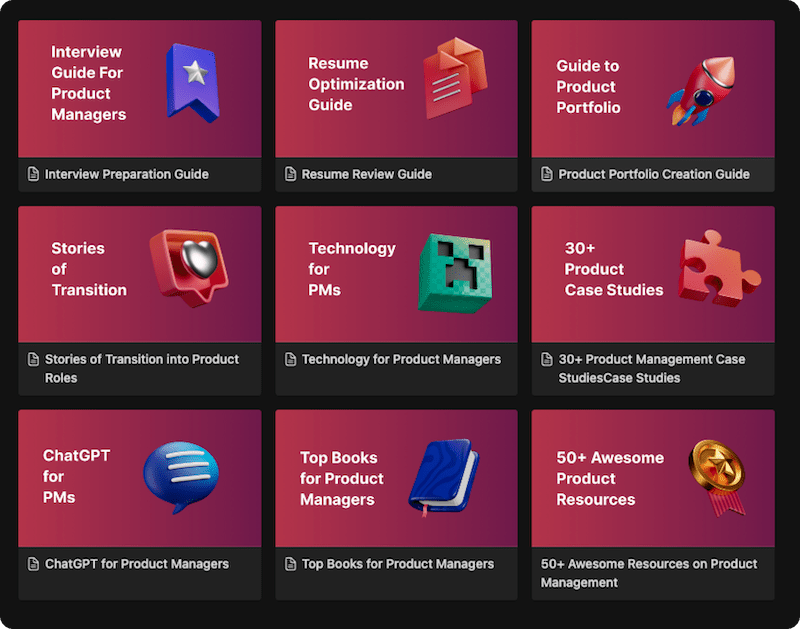As a product manager, how many times have you been in a Feature Prioritization meeting where the debate is driven by gut feelings and internal opinions? You have data on what users are doing, but you’re missing the crucial context of why they’re doing it. You’re building a Product Roadmap based on a collection of assumptions, hoping it aligns with what your customers actually need. To break this cycle and build products that truly resonate, you need to stop guessing and start listening. This is where building a Voice of the Customer (VoC) program becomes your strategic imperative—it’s the systematic process of listening to your customers to understand their world, their needs, and their frustrations.
This guide is your masterclass in the Voice of the Customer (VoC). We will take you from a foundational understanding to an expert-level ability to build and leverage a VoC program. You will learn the methodologies for collecting customer feedback, the frameworks for analyzing it, and the process for turning those raw insights into a powerful engine for your Product Strategy. By the end of this article, you will be equipped to move beyond assumptions, build a deep, empathetic connection with your users, and make data-informed decisions that lead to world-class products and a thriving, customer-centric culture.
Definition & Origin: From Quality Management to Customer Experience
The concept of Voice of the Customer originated in the 1980s within the Total Quality Management (TQM) movement in Japan. It was popularized by quality management experts like Dr. Yoji Akao, who developed the Quality Function Deployment (QFD) method in the late 1960s. QFD was a structured approach to ensure that customer requirements were accurately translated into the design and production of products.
The term “Voice of the Customer” was formally integrated into these practices to emphasize that the starting point for any quality improvement or product design must be a deep understanding of the customer’s needs, often expressed in their own words. As the business world shifted from a product-centric to a customer-centric view, VoC evolved from a quality management tool into a cornerstone of the modern Customer Experience (CX) and product management disciplines.
Benefits & Use-Cases: Why Listening is Your Superpower
Implementing a robust VoC program is one of the highest-impact initiatives a product organization can undertake.
- Drives Customer-Centricity: A VoC program makes the customer a tangible presence in every meeting, ensuring that their needs are at the forefront of every decision. This builds a strong Product-Led Culture.
- Reduces Churn Rate: By proactively identifying and addressing customer pain points, you can improve satisfaction and loyalty, which directly reduces churn and increases Customer Lifetime Value (LTV).
- Improves the Product Roadmap: VoC provides a direct line into what users want and need, making your Feature Prioritization process more data-driven and less reliant on guesswork.
- Accelerates Product-Market Fit: For new products or features, VoC is a critical tool for validating your hypotheses and iterating towards a solution that the market truly needs.
- Enhances Customer Experience: By listening across the entire Customer Journey Mapping, you can identify and fix friction points, creating a more seamless and enjoyable experience.
How It Works: A 4-Step Guide to Building a VoC Program
A successful VoC program is a continuous cycle of listening, analyzing, acting, and monitoring.
Step 1: Listen and Collect Customer Feedback (The “What”)
The first step is to gather feedback from multiple sources to get a holistic view. Don’t rely on a single channel.
- Direct Feedback (Solicited):
- Surveys: Use tools to send out Net Promoter Score (NPS), Customer Satisfaction (CSAT), and Customer Effort Score (CES) surveys.
- User Interviews: Conduct one-on-one interviews to get deep, qualitative insights.
- Focus Groups: Facilitate discussions with small groups of users.
- Indirect Feedback (Unsolicited):
- Online Reviews: Monitor review sites like G2, Capterra, or the App Store.
- Social Media Listening: Track mentions of your brand and products on platforms like Twitter, Reddit, and LinkedIn.
- Support Tickets: Your customer support interactions are a goldmine of information about user pain points.
- Inferred Feedback (Behavioral):
- Product Analytics: Analyze user behavior within your product. Where are users dropping off? Which features are they using most? This is the “what” that complements the “why” from direct feedback.
Step 2: Analyze and Interpret the Feedback (The “So What”)
Raw feedback is just noise. The next step is to turn it into a clear signal.
- Aggregate the Data: Bring all your feedback into a central repository. This could be a dedicated VoC platform, a BI Business Intelligence tool, or even a sophisticated spreadsheet.
- Identify Themes and Patterns: Use techniques like sentiment analysis and thematic analysis to identify recurring topics and trends. What are the most common feature requests? What are the top complaints?
- Prioritize the Insights: Not all feedback is created equal. Use a framework like Value vs Complexity to prioritize the insights that will have the biggest impact on your users and your business.
Step 3: Act on the Insights (The “Now What”)
This is the most critical step. Insights that don’t lead to action are worthless.
- Share the Findings: Disseminate the insights across the organization. Create dashboards, share reports, and present key findings to Stakeholders.
- Integrate into the Workflow: Feed the prioritized insights directly into your product development process. Turn a key piece of feedback into a User Persona update, a User Story for the Product Backlog, or a new requirement for the Product Roadmap.
- Close the Loop: This is a crucial, often-missed step. When you implement a change based on customer feedback, let them know! This shows your customers that you are listening and that their feedback matters.
Step 4: Monitor and Measure the Impact
After you’ve taken action, you need to measure the results to see if you’ve made a difference.
- Track Key Metrics: Are your changes improving your NPS? Has the Churn Rate gone down? Is User adoption of the new feature high?
- Continue Listening: The VoC program is a continuous loop. The feedback you gather on your new changes becomes the input for the next cycle of improvement.
Mistakes to Avoid: Common VoC Program Pitfalls
- Only Listening to the Loudest Voices: Don’t let a few vocal customers drown out the “silent majority.” Balance feedback from multiple channels.
- Collecting Feedback and Doing Nothing (Analysis Paralysis): This is the cardinal sin of VoC. If you ask for feedback, you must be prepared to act on it. Failure to do so breeds cynicism and survey fatigue.
- Using a Single Channel: Relying only on surveys or only on support tickets will give you a skewed view. A good VoC program triangulates data from multiple sources.
- Asking Leading Questions: Be careful that your survey questions aren’t biased. “How much do you love our new feature?” is a leading question. “How would you rate our new feature?” is not.
Examples / Case Studies: VoC in Action
- Apple: Apple’s VoC program is famously integrated into its product design. They use their vast network of retail stores for direct feedback, monitor social media and forums intensely, and use their Beta testing programs to gather detailed feedback from millions of users before a major OS release.
- Amazon: Amazon is a master of using indirect and inferred VoC. Their entire e-commerce empire is built on a feedback loop of customer reviews, ratings, and on-site behavior. They analyze which products are frequently returned and use that data to improve product descriptions or even delist low-quality items.
- Slack: Slack uses a combination of NPS surveys and a deep analysis of support tickets to understand user frustrations. They famously used their VoC program to identify that a confusing notification system was a major pain point, which led to a complete redesign of their notification preferences, significantly improving the Customer Experience.
Related Concepts & Comparisons
Voice of the Customer (VoC) vs. Customer Feedback
- Customer Feedback is the raw data. It’s the survey response, the support ticket, the tweet. It’s a single data point.
- Voice of the Customer (VoC) is the systematic program for collecting, analyzing, and acting on that feedback. It’s the entire process that turns the raw data into business intelligence.
Conclusion
In today’s competitive landscape, the companies that win are the ones that listen. The Voice of the Customer is not just a buzzword or a set of surveys; it is a fundamental shift in how an organization operates. It’s a commitment to building a culture of empathy, where the customer’s perspective is not just an afterthought but the driving force behind every strategic decision. By systematically capturing, analyzing, and acting on the wants and needs of your users, you move from a reactive, assumption-driven product process to a proactive, data-informed one.
As a product manager, championing a VoC program is your most powerful lever for influencing the organization and ensuring your team’s work is impactful. It provides the qualitative evidence you need to build compelling business cases, the customer stories that inspire your team, and the continuous feedback loop that is essential for long-term growth and innovation. Stop building in the dark. Open the channels, start listening, and let the voice of your customer be the guide that illuminates your path to building products that matter.
FAQ‘s
Market research is often a one-time project focused on a specific question or market segment (e.g., “Should we enter the European market?”). VoC is an ongoing, continuous program focused on improving the experience for your existing customers.
While it’s a cross-functional effort, the VoC program is often led by the product management, customer experience (CX), or marketing team. In a mature organization, there might be a dedicated VoC manager.
Start small. Focus on one feedback channel and demonstrate a clear win. For example, use insights from support tickets to inform a feature improvement, then show how that change reduced the number of support requests for that issue. Tying VoC to key business metrics like revenue and churn is the best way to get executive buy-in.
There are many great tools available. For surveys, look at Qualtrics, SurveyMonkey, or Typeform. For analyzing qualitative data, consider tools like Thematic or Dovetail. For all-in-one VoC and CX platforms, look at Medallia, InMoment, or Gainsight.
Learn better with active recall quiz
How well do you know What is Voice of Customer (VOC)? Let’s find out with this quick quiz! (just 10 questions)


